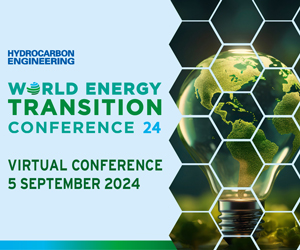“`html
The revolution of renewable energy is accelerating at an unprecedented pace. In 2024, the world reached a record level in the installation of clean sources. 92.5% of new electricity now comes from the sun, wind, and other sustainable sources.
The year was marked by impressive growth, with China adding nearly 64% of the new global renewable electric capacity. This jump of 15.1% compared to 2023 illustrates a tangible and ambitious energy transition. However, to achieve international goals of tripling renewable energy by 2030, an acceleration is necessary. Innovations in methanation and biomass valorization play a crucial role in this transformation toward a greener future.
Why the solar boom in China is a game changer for renewable energy
Renewable energy is reaching new heights, and the solar boom in China is the main driver. In 2024, China installed nearly 374 billion watts of solar power, representing about three-quarters of its total renewable capacity. This massive expansion places China far ahead of its global competitors, with a total solar capacity reaching 887 billion watts. This unprecedented dynamism significantly contributes to global efforts for an energy transition toward cleaner and more sustainable sources.
This advancement takes place within the broader context of international initiatives aimed at reducing carbon footprints and combating climate change. According to the International Renewable Energy Agency (IRENA), the world added 585 billion watts of renewable energy in 2024, an increase of 15.1% compared to the previous year. However, despite this impressive growth, China remains the undisputed leader, contributing nearly 64% of this renewable capacity.
The success of China relies on several key factors, including massive investments in solar infrastructures, favorable government policies, and strong technological innovation capacity. This combination allows China to produce solar energy at a large scale, thereby reducing costs and increasing accessibility for various economic sectors. Meanwhile, the installation of floating solar farms, such as the one operating on Lake Cottbuser Ostsee in Germany, illustrates the technological advancements that can amplify the impact of solar projects.
To learn more about the results of renewable energy actions, check out this article.
What are the economic impacts of solar expansion in China?
The expansion of the solar sector in China has major economic repercussions, both nationally and internationally. Firstly, the massive job creation in renewable energy is stimulating the local economy and providing new professional opportunities. Thousands of positions are created in the manufacturing, installation, and maintenance of solar panels, thus contributing to economic growth and reducing unemployment.
Moreover, China benefits from a significant reduction in energy costs due to the increased exploitation of solar energy. The decline in solar panel production costs, enabled by economies of scale and technological advancements, makes this energy more competitive compared to traditional sources such as coal and natural gas. This increased competitiveness leads to lower energy bills for consumers and businesses, thereby enhancing purchasing power and promoting investment in other economic sectors.
Globally, China’s dominance in the solar sector influences international markets by imposing more efficient production standards and reducing the global prices of solar equipment. This makes renewable energy projects more attractive for other countries, thereby facilitating a global energy transition. However, this dominance also raises geopolitical questions, particularly regarding energy dependence and competition among major economies for leadership in green technologies.
To explore the challenges related to renewable energy goals, check out this article.
How Chinese solar growth influences global policies
The rapid growth of the solar sector in China has a notable impact on global energy policies. As a world leader in renewable energy, China plays a crucial role in defining international standards and regulations. Chinese policies focused on the expansion of renewable energies, particularly solar, encourage other countries to adopt similar strategies to meet their own climate objectives.
For example, China’s involvement in developing advanced solar technologies pushes other nations to invest in research and development of their own renewable energy capacities. This creates a dynamic of competition and collaboration that accelerates innovation in clean energy. Moreover, China’s achievements serve as a model for developing countries seeking to adopt sustainable energy solutions without compromising their economic growth.
Additionally, China’s dominant position in the solar market influences international climate agreements. Climate negotiations, such as those conducted under the Paris Agreement, benefit from Chinese leadership that demonstrates that a transition to renewable energies is not only possible but also economically viable. This influence contributes to strengthening global commitments to greenhouse gas emissions reduction and encourages enhanced international cooperation to reach the established climate goals.
To understand the impact of fossil fuel-friendly policies on renewable energies, read this article.
What are the key technologies behind this solar boom?
The solar boom in China is supported by significant technological advancements that make solar energy more efficient and accessible. One of the key technologies is the improvement of photovoltaic cells, which convert sunlight into electricity with increased efficiency. Bifacial solar panels, for example, capture light from both sides, thus increasing energy output without requiring additional surface area.
Furthermore, innovation in energy storage plays a crucial role. Advanced batteries allow energy produced during the day to be stored for later use, which is essential to address the intermittency of renewable energy sources. China is investing heavily in research on storage technologies, ensuring a stable and reliable power supply, even in the absence of sunlight.
Smart energy management technologies, such as microgrids and artificial intelligence systems for optimizing electricity production and distribution, also contribute to the efficiency of the solar boom. These systems enable more precise and dynamic management of energy flows, reducing losses and increasing the overall efficiency of the electrical grid.
To learn more about what renewable energy is, check out this article.
What challenges remain to sustain this growth?
Despite the strong solar boom in China, several challenges remain to sustain this growth momentum. One of the main obstacles is the need to strengthen energy transportation and distribution infrastructures. With the rapid increase in solar capacity, it becomes imperative to develop more robust and resilient electrical networks capable of effectively managing the large-scale distribution of energy produced.
Another major challenge is the management of waste related to end-of-life solar panels. The massive production of solar panels generates waste that must be treated ecologically to avoid contamination and negative environmental impacts. China must invest in advanced recycling technologies and establish strict regulations to ensure sustainable management of solar waste.
Additionally, dependence on rare materials and complex supply chains poses challenges in terms of sustainability and resilience. Fluctuations in raw material prices and geopolitical tensions can affect the stability of the solar sector. Diversifying sources of materials and strengthening international partnerships are crucial strategies to mitigate these risks.
Finally, it is essential to maintain political and financial commitment to support long-term solar initiatives. Fluctuations in government policies, as evidenced by the struggle of the governor of Puerto Rico against renewable energy goals, can generate resistance and slow down sector development. Ensuring continuity in favorable policies and promoting enhanced international cooperation are essential to overcome these challenges.
To understand the economic implications of the illusions of renewable energy claims, check out this article.
Articles similaires
Thank you!
We will contact you soon.














